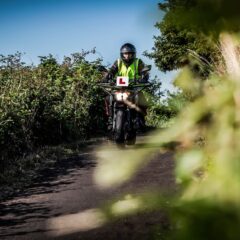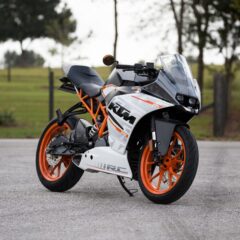
7 Top Motorcycle Accessories
With Christmas just around the corner, you might be wondering what to get your favourite motorcycle enthusiast or even a little something for yoursel...
 Phoenix Motorcycle Training LTD
Phoenix Motorcycle Training LTD
 Phoenix Motorcycle Training LTD
Phoenix Motorcycle Training LTD

Whether you want to ride a 50cc scooter or a classic motorbike, Compulsory Basic Training (CBT) is the starting point. Before you can take your CBT motorcycle training, you’ll need a provisional driving licence or a full driving licence. If you already hold a driving licence, you can jump right into a CBT course.
We’re often asked, “how long does a CBT take?” and the answer is often dependant on the individual. Everyone is different and training times for CBT courses vary. A CBT course usually lasts for a day and you’ll get your certification at the end. Your instructor will keep you informed about your progress throughout the day. They’ll help you improve in any areas that may be needed to reach the certification level.
People learn at different speeds, and some will find certain parts easier than others. There are 5 parts to the CBT and all qualified CBT instructors need to take students through a standard curriculum to ensure they understand and master all the necessary skills before they can approve your DL196 (CBT) certification. Gettering prepared with our tips for passing your CBT on the first try is a good place to start.
We tailor training courses for students’ skills. If you’re nervous about learning to ride a motorcycle, proper prararation can calm your worries. Our great instructors not only help you focus on areas that you need to improve in, but they also make the training fun. Most of the students at Phoenix Motorcycle Training schools learn how to ride a motorcycle and pass their CBT courses on the first try. Within a single day of training and practice, they gain the freedom of two wheels!
If you take a little longer to learn, that’s OK too. Everyone learns at a different pace and we all find some things harder than others. Try not to put pressure on yourself to learn within a certain time frame. This attitude is counterproductive for your training and makes it even harder to master two-wheeled travel! There is no point trying to rush through your motorcycle training course. It takes time to master new skills and become competent enough to ride safely.
It helps not to think of your CBT as a test. There is no strict pass-or-fail test; riders who aren’t ready after one day keep going until they achieve the correct standard.
Once you have CBT under your belt, you can choose to progress your training and move on to more powerful bikes. The progressive approach to learning allows you to begin riding as early as 15 years and 9 months of age. After passing your CBT, you can take to the roads but have a few restrictions. You can’t carry passengers. You can’t ride on motorways. And you’re not allowed to ride a machine with a higher engine power than 50cc. Your CBT certification remains valid for two years. After just one year you can decide to take your AM motorcycle licence test.
After riding on an AM licence for a minimum of one year, you can take an A1 licence test without any further motorcycle training, two years later the A2 licence test and then another two years later, the full ‘A’ licence test when you’re 21. The progressive approach to a full motorcycle licence takes around five years but means you can obtain a full licence at 21 years old, rather than 24 years old if taking the direct access route to a licence.
If you want to learn to ride later if life, there is a more direct route. Once you’ve got your DL196 (the CBT certification) you can move straight on to the highest licence level possible for your age. This means, if you’re 24 years old or older, you can undertake full licence training, often referred to as direct access motorbike training (DAS). This allows you to become licensed for the highest-powered motorbike you can ride for your age group. Direct access motorcycle training enables you to train for the highest-level motorcycle licence for your age. DAS courses, regardless of the licence level you are aiming to achieve, last anywhere from 3 to 5 days.
Really great motorcyclists never really stop learning. Constantly building on your skills increases your enjoyment and safety when you’re out on the road.

With Christmas just around the corner, you might be wondering what to get your favourite motorcycle enthusiast or even a little something for yoursel...

If you love motorcycle riding, you’ve probably daydreamed about riding a motorbike for a living. A professional racer or stunt rider is OK for some...

Getting a UK motorcycle licence can seem a complicated process. Particularly when compared to a driving licence for a car. Whether you choose the pro...
This website uses cookies to personalise content, ads, and analyse traffic, sharing data with partners who may combine it with other information. See our Privacy Policy for more information.